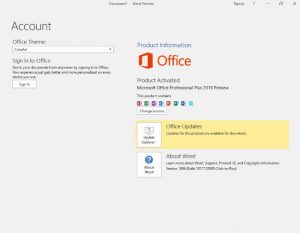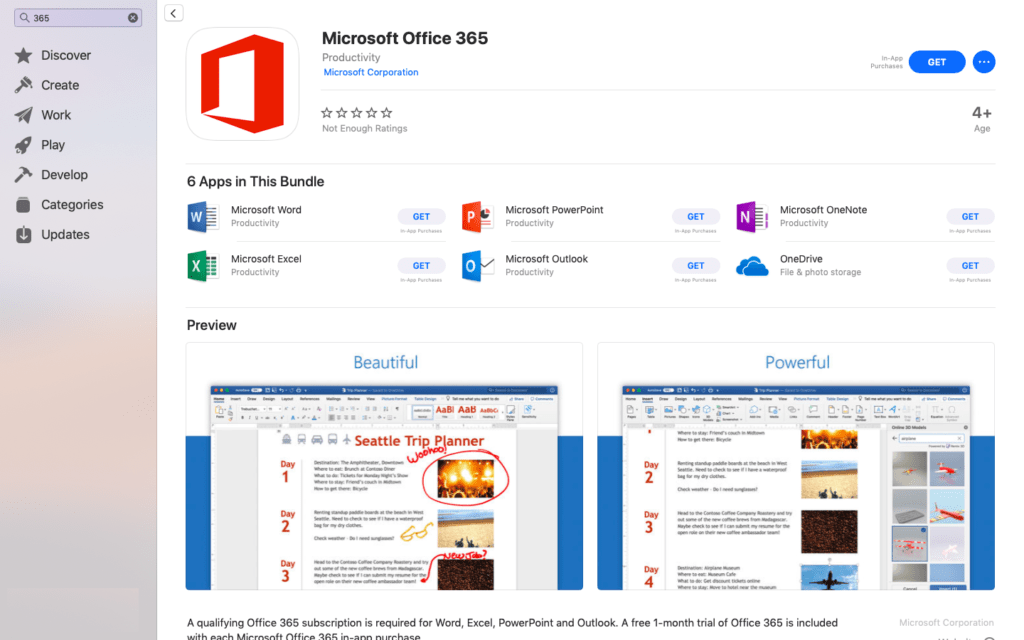Latest Version Of Office 365 For Mac
Alongside the version included in the Office 365 subscription package, Microsoft says it will release another Office for Mac update in 2021, which will be a single purchase. To provide you with the best experience, Office for Mac supports the three most recent versions of Apple's macOS. With the release of macOS 10.15 Catalina, Microsoft 365 for Mac and Office 2019 for Mac support macOS 10.15, 10.14, and 10.13. Microsoft Office Torrent works on a monthly subscribed option as well as target enterprise organizations. Office Download For Mac; Microsoft Office Microsoft Office update Download Free Torrent available on Windows and Mac; a browser version called Office Online; and also Microsoft Office also has Office, a cloud-based one-on-one subscription service. Added convenience, Office customers can.
- Cached
- Download And Install Or Reinstall Microsoft 365 Or Office ...
- See Full List On Docs.microsoft.com
Office 365 for Mac users might well be confused about compatibility with their MacOS. Some Office 365 for Mac users might not be getting the latest and greatest features.
Microsoft has a blog post might be accurate, but it doesn’t exactly shine with clarity. The situation appears confusing, so we’ll try to break it down for you.
In short: Office 365 for Mac gives you the latest features and updates if you have the latest MacOS (Mojave 10.14) or the two before (10.13 High Sierra or 10.12 Sierra).
Office 365 for Mac needs Mojave, Sierra or High Sierra
The ‘subscription’ Office 365 for Mac available now needs the MacOS released in the last two years. That’s version 10.12 (Sierra) or later.
If your computer has 10.11 (El Capitan) or earlier, Office 365 for Mac will still work and get Microsoft’s mainstream support. But no updates, because those updates need the more recent Mac OS.
What happened back in September 2018?
Back in September 2018 there was a mostly hidden switch in Office 365 for Mac software. The code base for the product changed depending on the version of MacOS being used.
Office 365 with Sierra 10.12 or later. These customers moved to the same code base as Office 2019 for Mac. That means both Office 365 for Mac and Office 2019 for Mac users share common code. The difference is that Office 365 users get new and updated features while Office 2019 is fixed and doesn’t get updated features.
Office 365 with El Capitan 1.11 or earlier. The existing ‘Office 2016 for Mac’ code base is kept, for compatibility with older MacOS. As a result, there’s no feature updates.
What to do?
Most Mac users update their MacOS relatively soon after an update comes out. Cautious ones might wait a few months before updating (just like Windows users).
Unless there’s a specific reason for keeping an older MacOS running, Office 365 for Mac customers should do proper backups then upgrade to at least Sierra 10.12 if not the latest MacOS Mojave.
Disk Compression and MacOS
Outlook for Mac is a big disk space hog. It’s method of saving data on the disk is wasteful and quite different to the PST/OST system in Outlook for Windows. One way to reduce the disk space used by Outlook for Mac was the disk compression see https://office-watch.com/2017/reduce-disk-space-used-outlook-mac/
A detailed and independent look at Windows 10, especially for Microsoft Office.
Fully up-to-date with coverage of the May 2020 major update of Windows 10.


This 1,000 pages, 40 chapter book shows you important features and details for Windows 10 users.
One major difference in High Sierra 10.13 is the switch to Apple File System APFS which does NOT support disk compression. Older machines with ‘Mac OS Extended’ (aka HFS+) drives will still work but newer Mac’s come with APFS and no compression option.
MacOS versions vs names
Apple gives each major MacOS release a name but there’s also a version number. The latest MacOS is officially version 10.14.
Most people and Apple itself calls version 10.14 ‘Mojave’ instead. So, naturally, Microsoft doesn’t use those names and instead reverts to the numbering <sigh>
Maybe Microsoft sticks with numbers because that’s what they do in Windows. Windows releases are promoted with names like ‘Creators Edition’ or ‘October 2018’ but those names are notably missing in Windows itself. Go to Windows, Settings | About and you’ll see a version number but not the name. <another sigh>
You can find your MacOS version at Apple | About This Mac. The Mac name and version number are clearly displayed. A practice Microsoft Windows could well learn from.
A Brief History of MacOS
To help you navigate Microsoft’s Office for Mac compatibility, here’s a recent history of Mac OS versions and names
10.14    Mojave,  released in September 2018. The latest MacOS
10.13Â Â Â Â High Sierra, released September 2017
10.12Â Â Â Â Sierra, released September 2016
10.11Â Â Â Â El Capitan
About the Mac App Store
Images of Office 365
Press Contacts
Starlayne Meza
Cached
Apple
(408) 974-3391
Download And Install Or Reinstall Microsoft 365 Or Office ...
Apple Media Helpline
See Full List On Docs.microsoft.com
(408) 974-2042
